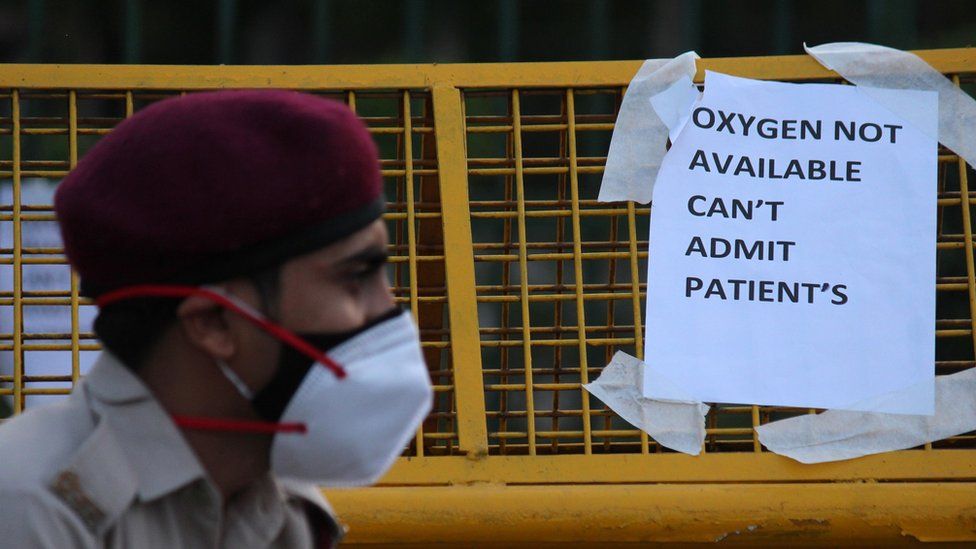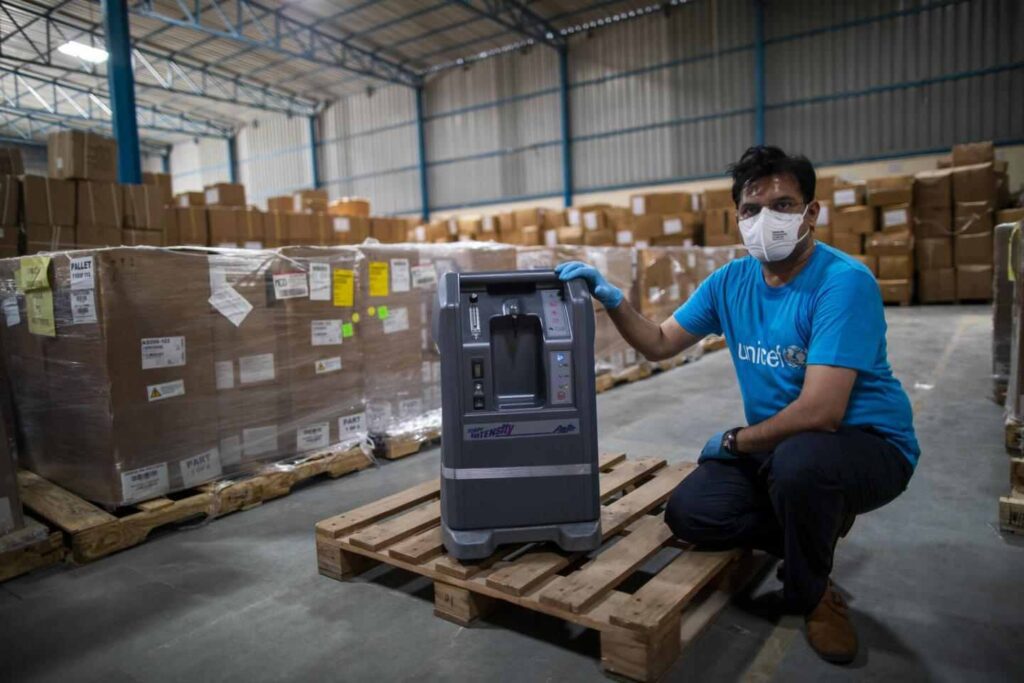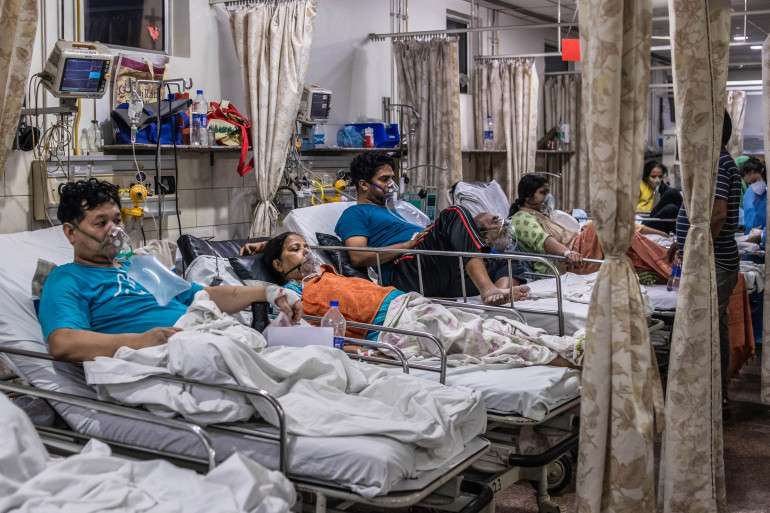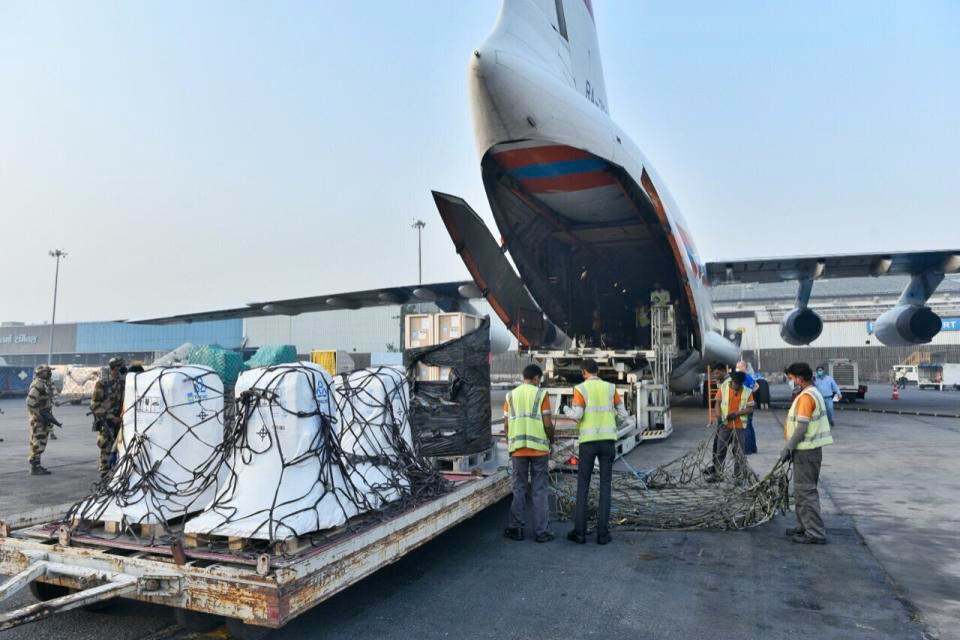The oxygen shortage in India during the second wave of the COVID-19 virus is particularly gruesome. Be it the lack of healthcare infrastructure, government mismanagement, or the people’s carelessness; the shortage of oxygen has brought this country to its knees. Healthcare workers have been stretched to their wits end. The healthcare system has collapsed. Hospitals are pleading the government for enough oxygen just to get through the day without any more losses.

“What can doctors do when our infrastructure is unable to take the patients, when there are no hospital beds or oxygen cylinders?”, asks Dr. Jalil Parkar, one of India’s leading pulmonologists currently treating COVID-19 patients at Mumbai’s Lilavati Hospital.
“Our healthcare system has collapsed. We have let down our own people in the country.”
This bleak situation explains why terms like `oxygen concentrator’, ‘pulse oximeter’, ‘oxygen cylinder’, and several others along similar lines have shown a sharp increase in Google search hits in recent times.
Why do COVID-19 patients need oxygen?
COVID-19 being a respiratory illness often results in symptoms causing shortness of breath. When this shortness of breath progresses to a more acute condition called ARDS (Acute Respiratory Distress Syndrome), several patients require oxygen support to ensure their oxygen saturation remains at acceptable levels.
The reason for a drop in oxygen saturation can be attributed to the coronavirus infecting respiratory epithelial cells that line the respiratory tract. The body’s immune system causes an inflammatory response to counter this infection. However, this inflammation reduces the efficiency of oxygen transfer in the lungs and sometimes causes a fluid build-up too. A combination of these effects consequently results in decreased levels of blood oxygen.
Members of the national COVID-19 Task Force, after studying hospital data, state that over 50% of the hospital admissions during the present second wave require oxygen support during treatment for the virus. This is a massive 13.4% increase in comparison the September-November period last year.
What are oxygen concentrators and how do they work?
These boxes, about the size of a desktop PC are lifesavers for many. An oxygen concentrator is a medical device used to concentrate oxygen present in the ambient atmospheric air and supply that to a patient. They take in air from the surroundings that comprises of 21% oxygen, with the rest being mostly nitrogen and other gases in trace amounts. Next, the air taken in is filtered such that only oxygen is left behind with the rest of the gases being released back into in the surrounding air. This filtered air, saturated with oxygen, is finally supplied to the patient through a cannula.

The World Health Organization (WHO) states that oxygen concentrators are designed to support continuous usage for 24 hours a day, 7 days a week up to even 5 years. Although, in common practice that is not an advisable usage scenario; the key takeaway from this assertion is that concentrators are designed to be reliable.
Efficacy
This concentrated oxygen is approximately 90-95% pure in comparison to the 99% purity of Liquid Medical Oxygen (LMO). Additionally, a pressure valve allows one to adjust the rate of oxygen supply ranging from 1-10 litres per minute. Experts state that oxygen concentrators are sufficient to support COVID-19 patients having oxygen saturation levels of 85% and above. It is not recommended to use concentrators for patients under intensive care. LMO is preferred in ICUs as they provide higher oxygen concentration levels supplied to the patient.

Choosing between Oxygen Cylinders/LMO and Oxygen Concentrators
Although concentrators and cylinders serve the same purpose: supplying oxygen, there is still a considerable difference in their suitability for cases. Oxygen concentrators can only supply 5-10 litres of oxygen per minute while patients with critical levels of oxygen saturation may need up to even 50 litres per minute. Hence, in severe cases LMO cylinders are preferred over concentrators.
For mild cases, concentrators are far more portable in comparison to LMO which needs to be transported in cryogenic tanks. Additionally, there is no requirement to refill a concentrator as it uses only the ambient air.
Current Market Demand
Given the current situation in the country, it comes as no surprise that the demand for oxygen concentrators is surging through the roof. They are usually priced between Rs. 40,000 to Rs. 90,000, concentrators.

Dr. Rajiv Nath, forum coordinator at AIMED, estimates the daily demand to be for approximately 1000-2000 concentrators. This means the present monthly sales would be more than the annual concentrator sales for previous years. He further adds that there simply aren’t enough manufacturers to meet the current demand, adding to the strain on the healthcare system.
Oxygen concentrators have emerged as a lifeline to patients, especially considering the lack of Liquid Medical Oxygen cylinders available. Several hospitals nationwide are currently running their oxygen supply down to the wire and struggling to replenish the same. An increased availability of oxygen concentrators would allow them to redirect LMO only to severe cases, with concentrators being used to treat patients exhibiting moderate symptoms.

